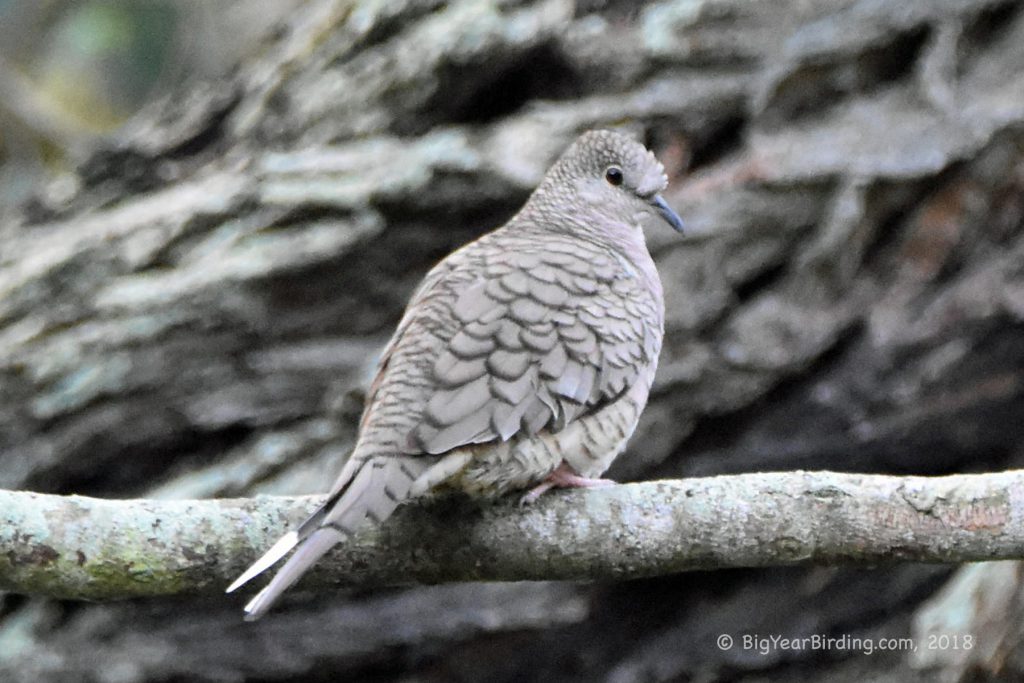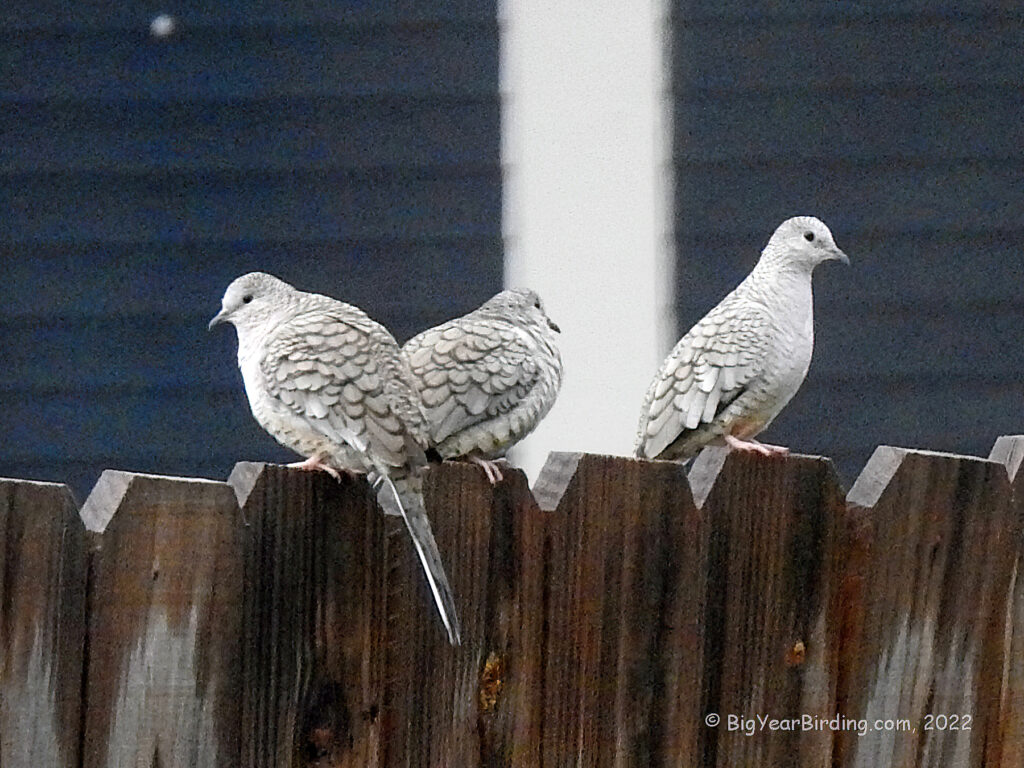
The Inca Dove (Columbina inca) is a small bird found in the southwestern United States, Mexico, and Central America. Measuring between 7 and 9 inches in length and weighing between 1.4 and 2.1 ounces, this bird is one of the smallest dove species in the region. Its small size and unique features make it easy to distinguish from other doves.
One of the most distinguishing features of the Inca Dove is its scaled plumage. The feathers on its back, wings, and tail are a mixture of tan, brown, and gray, and are outlined with black scales. Its face and breast are a soft pinkish-gray, and it has a dark, curved line that extends from the eye to the beak. Its tail is long and pointed, and it has a small patch of white feathers on its wings that are visible when it flies.

The Inca Dove is a resident bird, meaning it does not migrate, and can be found year-round in its range. Its preferred habitat includes arid and semi-arid areas such as deserts, scrublands, and grasslands. It is also known to inhabit urban areas such as parks and gardens, and can often be seen perched on telephone wires or other man-made structures.
In terms of behavior, the Inca Dove is a social bird that often feeds in groups and can be seen walking on the ground searching for seeds and insects. It is also known for its distinctive courtship display, which includes the male puffing up its feathers and walking in circles around the female while making a cooing sound.

Despite its small size, the Inca Dove has a significant impact on its ecosystem. It plays a role in pollination by consuming nectar from flowers and spreading pollen as it feeds. It is also an important food source for predators such as raptors and snakes. Overall, the Inca Dove is a fascinating bird with unique physical features and behaviors, and its presence in its range adds to the diversity of the region’s avian community.
